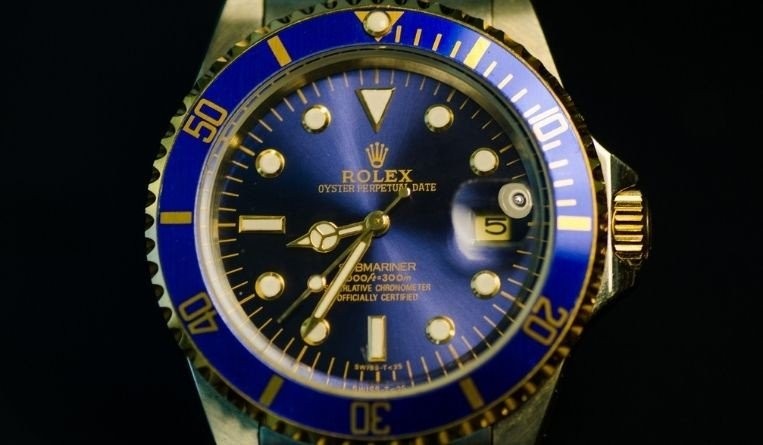Mariner and submariner marks by competing companies found to be more similar than dissimilar
27 October 2020

In June 2020 in Singapore, Rolex S.A.’s opposition to the registration of Mariner by FMTM Distribution Ltd., a company also engaged in watchmaking, succeeded. Thus, the registration of said mark by FMTM, a member of the Franck Muller group, was refused.
On February 5, 2016, FMTM sought to register the trademark in Class 14 under horological instruments and parts thereof. Rolex registered its trademark Submariner also under Class 14 on June 11, 1959. The Swiss luxury watch manufacturer argued that the Application Mark Mariner is confusingly similar to the Opponent’s Mark Submariner.
IP adjudicator Tony Yeo, who is also managing director of IP at Drew & Napier in Singapore, found Mariner and Submariner to be more similar than dissimilar. The two also exhibited confusing similarity under Section 8(2)(b) of the Trade Marks Act.

According to Yeo, both were made up of single words and were of the same length. Moreover, the entire application mark was encompassed in the opponent’s mark. The marks also contained three identical or similar-sounding syllables. While these three identical syllables made up the entirety of the application mark, they also constituted a significant part of the opponent’s mark. The only difference between the two is the addition of “Sub” in the latter.
Yeo also found both marks to pertain to the same things: sea and sailor.
“I agree with the results reached in this case that Mariner and Submariner are more similar then dissimilar. Given that Mariner is entirely encompassed within Submariner and ‘Sub’ is only a small addition, at least from a quantitative perspective, there would be visual and aural similarities between both marks,” said Audrey Yap, managing partner at Yusarn Audrey in Singapore.
“In addition, both Mariner and Submariner have very close meanings. As pointed out by the IP adjudicator, both words refer to a sailor. Even if one does not know the exact definition of each mark, both marks can be understood as evoking concepts of the seas or open waters,” Yap said.
According to FMTM, the dominant and distinctive components of the marks were Submarine for the opponent’s mark and Marine for the application mark. During the hearing, however, the applicant said that the prefix “Sub” was the dominant component of the opponent’s mark and identified online articles exhibited in the opponent’s statutory declaration. In these articles, Submariner watches were referred to as a “Sub” or “Subs.”
“It is difficult to speculate the exact reasons or strategy behind the applicant’s arguments,” said Yap. “Context does play a role in interpretation as do the variety of facets each case presents. There is also the view that consumers tend to focus on the first alphabet and the first syllable when they read, as how the eye scans an article. But, this should never be considered in isolation as other factors may overshadow how it is actually perceived in use.”
Yeo concluded that the similarity between the marks and the products may lead to confusion among consumers. While the public in general will exercise care and good sense when buying a watch, the average consumer does not have expert knowledge of watches that he can rely on when buying a watch. Thus, opposition under Section 8(2)(b) of the act succeeded.
However, the section is unclear as to similarity of trademark names since it does not state how to determine similarity.

Said Yap: “While the act does not state how similarity is to be determined, Singapore case law has supplied a framework for doing so: the Courts and tribunals will compare the visual, aural and conceptual similarities of the marks in dispute. Within each of these categories, Singapore case law has also provided guidelines to help determine when one mark can be said to be similar to another mark. For instance, in comparing the visual similarities between two marks, the Courts/ tribunal will assess the length of the marks, structure of the marks, and/or whether the same letters are used in the marks.”
“As noted above, the definitions of both Submariner and Mariner are in fact quite close, even though they are two different words. Hence, this was a factor that led to the overall conclusion that the marks are similar. It would be a different case if the addition of a term resulted in a word with an entirely different meaning, e.g. if ‘Sub’ were added to ‘stance’ or ‘merge,’ then the resulting substance or submerge would be words with different meanings from ‘stance’ or ‘merge.’”
The IP adjudicator likewise saw a case of misrepresentation in the tort of passing off under Section 8(7)(a) of the act.
“The sole fact that two words are different does not in and of itself automatically preclude a finding of passing off or that there is a likelihood of confusion between the two marks. This is because the law does not demand that two marks must be identical before it is prepared to rule in favour of the earlier mark. Rather, the law recognizes that there are situations where the use and/or registration of non-identical words should be prohibited. Hence, the law allows proprietors to take action against both identical and similar marks. Overall on a balance of the arguments, I agree with the results reached in this case,” said Yap.
Acknowledging that Rolex had goodwill in its business in Singapore, Yeo agreed that such goodwill may be damaged due to the fact that Rolex and FMTM are industry competitors.
Espie Angelica A. de Leon






